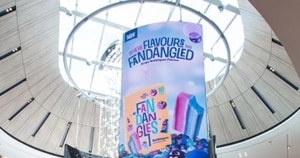Digital Out of Home (DOOH) advertising is becoming ubiquitous. Digital billboards and displays are quickly replacing traditional print advertising in every place imaginable — from signage along interstates to airports and shopping malls, even your neighborhood bus shelter. And, the selling point is no surprise to anyone in the advertising game. Digital displays are taking over because it’s so easy to switch out the content. Gone are the days of having to take down an old billboard and put up a new one. So it’s no revelation that the companies that sell space on these digital displays are trying to up the ante in 2017 in order to offer advertisers more bang for their buck.
The year’s most important trend is all about getting bigger and brighter content out there. Finer pixel displays, which offer superbly vibrant, precise images are going to continue to dominate the DOOH space. And, as fine pixel displays continue to become more and more affordable, consumers are likely to see more LED displays in thinner, larger dimensions pop up in new places.
The second major trend of 2017 is all about adding value to the advertiser. Digital Out of Home companies are equipping LED displays with software and technologies that collects data about the audience. Today, agencies are getting creative, using multiple technologies to overcome the downfalls of the different technologies and return more data points providing a clearer picture. For example, if a company owns an array of digital displays in bus shelters in a major metropolitan area, the displays can be outfitted with various audience measurement software that tells the company which bus shelters are the most active and at what time of day. Companies can also learn the travel routes of various customers at any given time, and by layering in technologies like Beacons and WiFi, they can also employ camera based recognition software. This software can be installed on digital displays in order to recognize the audience members in front of it, capture information like headcount, gender, and age, and then change the content on the display according to that audience member. No, this isn’t a scene from “Minority Report.” This is digital display advertising in 2017.
The information gleaned from audiences also offers DOOH companies a powerful tool to offer advertisers. Through the collection of audience information by a display or network of displays, DOOH companies can allow advertisers to curate the audience who sees their content. Instead of hitting everyone who happens by a display with the same content in a scatter shot fashion, advertisers can use the information mined from displays to make sure their content is only shown to audiences who will likely find the content appealing. The data collected from a digital display at a bus shelter near Yankee Stadium may show that the display is ripe for advertisements for sports fan gear, while another bus shelter near New York’s 5th Avenue might have an audience tailor-made for a fashion advertisement or a special exhibit at an art museum.
The final trend in 2017 for DOOH advertising involves putting all of this data together. A cross-pollination of all of these new and exciting technologies will be the goal for many advertising companies, so they can offer prospective advertisers a granular level of detail on the audiences who will be seeing their content. DOOH companies will be looking to take the large amount of data being collected by today’s displays and assembling it in a way that makes sense and helps better understand consumer behavior so advertisers get the most benefit. And as more and more functionality is added to smart phones, that functionality will also be incorporated into digital displays. To find out more on how fine pixel pitch LED displays can amp up your digital out of home advertising business, contact Nanolumens here today.
~Brice McPheeters

